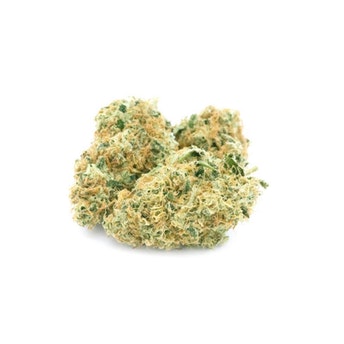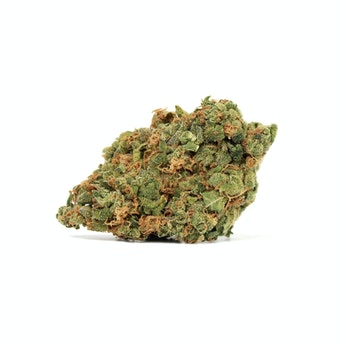You might think that cannabis strains should yield the same indoors and outdoors, but various factors influence the outcome. From light exposure to nutrient availability, indoor and outdoor environments present unique challenges and advantages that impact plant growth and ultimately, yield.
Understanding these differences can help you optimize your cultivation efforts and maximize the production of high-quality cannabis. Consider the light spectrum, temperature fluctuations, and other variables that contribute to the divergent results between indoor and outdoor cannabis strains.
Table of Contents
Here Are the Indoor and Outdoor Cannabis Strains That Differ in Yield:
Environmental Factors Impacting Yield
Environmental conditions play a crucial role in determining the yield of cannabis plants, influencing factors such as growth rate and overall plant health. Temperature is a key environmental factor affecting cannabis yield. For indoor cultivation, maintaining a temperature range between 70-85°F (21-29°C) during the day and slightly cooler at night is optimal for plant growth. Fluctuations outside this range can stress the plants, leading to reduced yields.
Humidity levels also play a significant role. High humidity above 60% can increase the risk of mold and mildew, impacting plant health and reducing yields. On the other hand, low humidity below 30% can cause dehydration and nutrient uptake issues in the plants. Air circulation is crucial for maintaining proper humidity levels and preventing stagnant air pockets that can harbor pests and diseases.
Additionally, proper ventilation helps regulate temperature and CO2 levels, promoting healthy growth and maximizing yield potential. By carefully monitoring and controlling these environmental factors, you can optimize the conditions for your cannabis plants, leading to higher yields and better overall plant quality.
Related Article: What Are the Health Effects of Edible Cannabis?
Light Requirements for Indoor Growth
Given the critical role of environmental factors in determining cannabis plant yield, it’s essential to understand the specific light requirements for optimal indoor growth. Cannabis plants thrive under specific light conditions that mimic the natural sunlight spectrum. For indoor cultivation, high-intensity discharge (HID) lights like metal halide (MH) and high-pressure sodium (HPS) are commonly used during the vegetative and flowering stages. These lights emit intense light suitable for promoting robust plant growth and flowering. LED grow lights have also gained popularity due to their energy efficiency and customizable spectrum settings, providing an alternative for indoor growers.
Light intensity, measured in lumens or lux, should be carefully monitored to ensure that plants receive adequate light for photosynthesis. Cannabis plants typically require around 600-1000 µmol/m²/s of light for optimal growth. The light cycle is equally crucial, with most growers opting for an 18-6 light/dark cycle during the vegetative stage and a 12-12 cycle during flowering to stimulate bud development. Proper light distance and coverage are essential to prevent light burn or shading within the canopy, ensuring uniform growth and maximum yield potential.
Temperature and Humidity Considerations
When cultivating cannabis, you must consider how temperature and humidity levels impact yield. These environmental factors play a crucial role in the growth and development of your plants.
Maintaining optimal conditions for growth is essential to maximize your yield potential.
Climate Impact on Yield
Considering the impact of temperature and humidity on cannabis yield is crucial for optimizing indoor and outdoor cultivation methods. Maintaining the right climate conditions can significantly influence the final yield of your cannabis plants. Here are some key points to keep in mind:
- Temperature: Cannabis plants thrive in temperatures between 70-85°F (21-29°C), as extreme heat or cold can stress the plants and reduce yield.
- Humidity: Controlling humidity levels between 40-60% during the vegetative stage and around 40% during the flowering stage is essential for preventing mold and mildew issues.
- Temperature fluctuations: Sudden temperature changes can cause plant stress and decrease yield, so aim for stable and consistent temperatures.
- Humidity spikes: High humidity spikes, especially during flowering, can lead to bud rot, impacting the final yield.
Growing Environment Factors
To optimize the yield of cannabis plants, it’s essential to carefully manage the temperature and humidity levels in the growing environment.
Temperature plays a crucial role in the growth of cannabis plants. Ideally, temperatures between 70-85°F (21-29°C) during the day and slightly cooler at night promote optimal growth. Fluctuations outside this range can negatively impact plant development.
Moreover, maintaining proper humidity levels is equally important. For cannabis plants, a humidity range of 40-60% is recommended during the vegetative stage, while a slightly lower range of 40-50% is preferred during flowering. High humidity can lead to mold and mildew issues, while low humidity can cause stress and slow growth.
Therefore, monitoring and controlling temperature and humidity levels are vital for maximizing cannabis yield.
Optimal Conditions for Growth
Maintaining precise temperature and humidity levels is crucial for fostering optimal growth in cannabis plants. To ensure your cannabis plants thrive, consider the following factors:
- Temperature: Aim for a daytime temperature range of 70-85°F (21-29°C) and a nighttime range of 58-70°F (14-21°C).
- Humidity: Keep humidity levels between 40-60% during the vegetative stage and around 40% during the flowering stage.
- Air Circulation: Ensure good airflow to prevent mold and mildew; use fans or ventilation systems.
- Monitoring: Regularly check and adjust temperature and humidity levels using hygrometers and thermometers to maintain ideal conditions for your cannabis plants.
Nutrient Management for Outdoor Strains
Implementing a structured nutrient management plan is crucial for optimizing the growth and yield of outdoor cannabis strains. Outdoor cannabis plants require a balanced supply of essential nutrients to thrive in natural environments. Nitrogen, phosphorus, and potassium are key elements that play vital roles in plant development.
Nitrogen aids in leafy growth and overall plant vigor, while phosphorus supports root development and flower formation. Potassium contributes to the plant’s overall health and resilience against environmental stressors.
To ensure proper nutrient uptake, soil testing is recommended before planting to determine existing nutrient levels. Based on the results, organic or synthetic fertilizers can be applied accordingly. Organic options like compost, manure, or bone meal provide slow-release nutrients and improve soil structure. Synthetic fertilizers offer precise nutrient ratios for targeted plant growth stages.
Regular monitoring of plant health and leaf coloration can indicate nutrient deficiencies, allowing for timely adjustments to the feeding schedule. Over-fertilization should be avoided as it can lead to nutrient imbalances and harm the plants. By carefully managing nutrients, outdoor cannabis growers can promote healthy growth and maximize their yield potential.
Pest and Disease Control in Indoor Settings
Controlling pests and diseases in indoor cannabis settings requires a comprehensive and proactive approach to safeguard plant health and maximize yield potential. To ensure a healthy crop, consider the following strategies:
- Integrated Pest Management (IPM): Implement a holistic approach that combines biological controls, cultural practices, and minimal pesticide use to manage pests effectively.
- Regular Monitoring: Inspect plants frequently for signs of pests or diseases, such as yellowing leaves, spots, or unusual growth patterns, to catch issues early.
- Proper Air Circulation: Maintain good airflow within the grow space to reduce humidity levels and prevent conditions favorable for mold and mildew growth.
- Quarantine Procedures: Introduce new plants to the indoor environment only after a thorough inspection and quarantine period to prevent the spread of potential pests or diseases.
Genetics Influence on Yield Potential
When considering the yield potential of cannabis plants, genetics play a crucial role in determining the final outcome. Various factors within the genetic makeup of a strain can significantly impact the quantity and quality of the harvest.
Understanding how different genetics influence yield can aid growers in selecting the most suitable strains for their specific cultivation environment.
Genetics and Yield
Genetic factors play a crucial role in determining the yield potential of cannabis strains, influencing the quantity and quality of the final harvest. When considering how genetics impact yield, several key factors come into play:
- Yield Potential: Certain genetic strains naturally produce higher yields than others.
- Flowering Time: Genetics influence how long it takes for the plant to reach maturity and be ready for harvest.
- Resistance to Pests and Diseases: Some strains are genetically more resistant to common pests and diseases, which can impact overall yield.
- Cannabinoid Profile: The genetic makeup of a strain determines the levels of cannabinoids produced, affecting the quality and market value of the final product.
Yield Potential Factors
Factors influencing yield potential in cannabis strains are primarily determined by genetic characteristics that dictate the plant’s ability to produce a higher quantity and quality of harvest. These genetic factors play a crucial role in determining the plant’s growth patterns, bud development, and overall yield capacity.
Traits such as flowering time, cannabinoid production, terpene profiles, and resistance to pests and diseases are all influenced by the genetic makeup of the plant. Specific genetic variations can lead to increased bud density, larger yields, and improved potency.
Understanding the genetic factors that contribute to yield potential can aid growers in selecting strains that are better suited for their cultivation environment and desired outcomes. By choosing strains with favorable genetic traits, growers can optimize their harvests for maximum yield and quality.
Impact of Genetics
The intricate interplay of genetic traits within cannabis strains significantly influences their yield potential, shaping key aspects of plant development and productivity. Genetic factors play a crucial role in determining the overall yield of cannabis plants. Here are some key ways genetics impact yield potential:
- Yield Potential: Different genetic strains have varying inherent yield potentials.
- Plant Structure: Genetics influence how plants grow, affecting their ability to support large, dense buds.
- Flowering Time: Genetic factors determine how long a plant takes to flower, impacting overall yield.
- Resin Production: Certain genetics are predisposed to produce higher levels of resin, influencing yield and potency.
Training Techniques for Indoor Yields
Utilize various training techniques to optimize indoor cannabis yields, maximizing the efficiency of your grow space and promoting healthy plant growth.
One effective method is topping, which involves cutting off the tip of the main stem to encourage the growth of multiple colas. This technique helps control the height of the plant, ensuring that light is evenly distributed to lower branches.
Another beneficial training technique is low-stress training (LST), where you gently bend and tie down branches to create a more horizontal growth pattern. LST allows for better light penetration and air circulation, leading to increased bud development.
Additionally, techniques like defoliation, removing unnecessary leaves to improve light exposure, and super cropping, gently damaging the plant to encourage lateral growth, can further enhance yields.
Harvest Timing and Methods
When it comes to maximizing your cannabis yield, timing plays a crucial role in determining the quality and quantity of your harvest.
Understanding the optimal time to harvest your plants and employing effective harvesting methods are essential for achieving the best results.
Timing Impacts Yield
Harvest timing and methods significantly impact the yield of cannabis crops. When it comes to maximizing your harvest, timing is crucial. Here are some key points to consider:
- Flower Maturation: Harvesting too early can lead to lower yields due to underdeveloped buds.
- Trichome Color: Monitoring trichome color changes can help determine the ideal time for harvest.
- Light Exposure: Consider harvesting during the plant’s dark period to preserve terpene levels.
- Drying and Curing: Properly drying and curing harvested buds can enhance their quality and overall yield.
Considering these factors can help you optimize your harvest and achieve the best possible yield from your cannabis crops.
Methods for Harvesting
Optimizing the yield of cannabis crops during harvest involves implementing precise techniques to ensure maximum quality and quantity of buds. Harvest timing is crucial for achieving the desired potency and yield. Cannabis plants should be harvested when the trichomes are milky white or amber, signaling the peak cannabinoid levels.
To harvest, use sharp pruning shears to cut the main stem and hang plants upside down in a dark, well-ventilated room with temperatures around 60-70°F and humidity around 45-55% for drying. Once the buds feel dry on the outside but still slightly moist inside, trim them carefully to remove excess leaves.
Proper curing in glass jars will further enhance the aroma, flavor, and potency of the final product, ensuring a successful harvest.
Watering Needs for Outdoor Plants
Properly adjusting the frequency and amount of water for your outdoor cannabis plants is crucial for their optimal growth and development. Outdoor plants have unique watering requirements compared to indoor ones due to environmental factors.
Here are some key considerations for watering your outdoor cannabis plants effectively:
- Soil Type: Different soil types have varying water retention capacities. Sandy soils drain quickly, requiring more frequent watering, while clay soils hold water longer, necessitating less frequent watering sessions.
- Weather Conditions: Take into account the local climate and adjust watering frequency accordingly. Hot and dry conditions may necessitate more frequent watering to prevent dehydration.
- Plant Growth Stage: The watering needs of cannabis plants vary during different growth stages. Young plants require more frequent watering, while mature plants may need less frequent but deeper watering.
- Watering Technique: Ensure water reaches the roots effectively by using methods like drip irrigation or soaker hoses to promote deep root growth and reduce water wastage.
Comparing Cannabinoid Profiles
When comparing cannabis strains, understanding their cannabinoid profiles is essential for evaluating their potential medicinal or recreational effects. Cannabinoids are the chemical compounds in cannabis that interact with the human body’s endocannabinoid system, producing various effects. The most well-known cannabinoids are THC (tetrahydrocannabinol) and CBD (cannabidiol). THC is responsible for the psychoactive effects of cannabis, while CBD is associated with potential therapeutic benefits without the high.
Different cannabis strains have varying levels of cannabinoids, leading to distinct effects. For example, a strain high in THC and low in CBD may be more suitable for recreational use due to its potent psychoactive properties. On the other hand, a strain with higher CBD content and lower THC levels might be preferred by medical users seeking symptom relief without impairment. Understanding the cannabinoid profiles of different strains allows consumers to choose products that align with their desired outcomes, whether that be relaxation, pain relief, or heightened creativity.
Frequently Asked Questions
Can the Same Strain Produce Different Yields Indoors and Outdoors?
Yes, the same cannabis strain can produce varying yields indoors and outdoors due to differences in light intensity, temperature, humidity, nutrient availability, and overall environmental conditions. Understanding and optimizing these factors is crucial for maximizing yield.
How Do Different Soil Types Affect the Yield of Cannabis Plants?
Different soil types influence cannabis plant yield by affecting nutrient availability, drainage, and root development. Sandy soils drain quickly but may require more fertilization. Clay soils retain moisture but can lead to root rot if too wet.
Are There Any Specific Pests or Diseases That Only Affect Outdoor Cannabis Plants?
Outdoor cannabis plants are susceptible to unique pests and diseases like spider mites, caterpillars, and gray mold due to the open environment. Monitoring and prevention strategies, such as beneficial insects and proper ventilation, can help mitigate these risks.
How Does Air Circulation Impact the Yield of Indoor Cannabis Plants?
Proper air circulation in indoor cannabis cultivation impacts plant yield by ensuring CO2 distribution, temperature control, and preventing mold growth. Strategically placed fans and ventilation systems optimize air movement, fostering healthy growth.
What Role Does Ph Balance Play in Determining the Yield of Cannabis Plants?
Maintaining optimal pH balance is pivotal for maximizing cannabis yield. It influences nutrient absorption, affecting plant health and productivity. Monitoring and adjusting pH levels in the growing medium ensure that essential nutrients are readily available for robust plant growth.
Conclusion
In conclusion, the difference in yield between indoor and outdoor cannabis strains can be attributed to a variety of environmental factors. From light requirements and temperature considerations to nutrient management and pest control, each setting presents unique challenges and opportunities for maximizing yield.
By understanding these factors and implementing appropriate techniques, growers can optimize their yield potential and produce high-quality cannabis with desired cannabinoid profiles.




